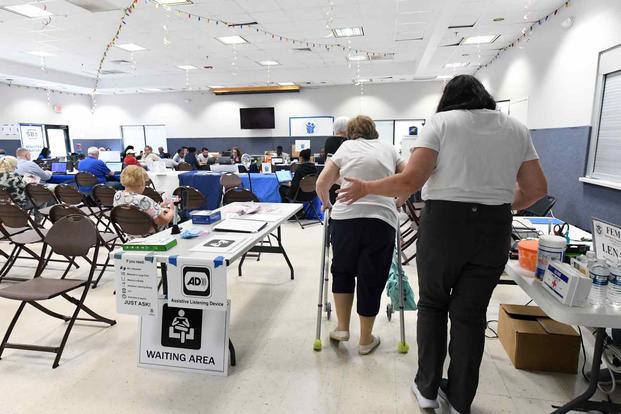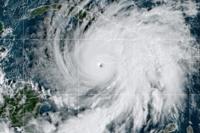Sherman Gillums Jr. is the director of the FEMA Office of Disability Integration and Coordination and a retired U.S. Marine.
The opinions expressed in this op-ed are those of the author and do not necessarily reflect the views of Military.com. If you would like to submit your own commentary, please send your article to opinions@military.com for consideration.
Just as maintaining readiness in the military is critical for making sure a unit can meet its mission, it is also critical for caregivers of veterans with complex, service-related conditions.
Disasters such as floods, hurricanes and earthquakes need to be a priority among veterans with disabilities, their families and their communities. And the best time to discuss disaster preparedness is always now.
The Federal Emergency Management Agency, or FEMA, offers resources and information to support the critical role of military caregivers in readying families before, during and after disasters.
Family caregivers make up more than one in five Americans who selflessly devote their time to feeding, providing hygiene, administering medications and so much more for the well-being of their loved ones. But they may not have considered a plan in the event of natural disasters. That is especially important for those who live in disaster-prone areas, such as Florida, Puerto Rico and California, which also have large concentrations of disabled military veterans.
Disaster readiness can be lifesaving and life-sustaining for anyone with disabilities and, even though many veterans with disabilities have backgrounds in contingency responses and quick reaction drills, those skills might be underused after discharge. Disaster planning provides an excellent opportunity for veterans and caregivers to translate their problem-solving skills into proactive courses of action that may be crucial in times of crisis.
Planning can range from basic concerns, such as administering and refilling medications while sheltering, to more significant issues, such as access to transportation and accessible temporary housing, should it become necessary.
Veterans eligible for health care at Department of Veterans Affairs hospitals or VA-contracted providers should plan how to coordinate care with their providers or specialty clinics. Caregivers should strategize how to care for their veterans over extended periods, including their own self-care and alternatives to institutionalized long-term care, if it can be avoided.
If you are a caregiver, create a network of people who can offer support in a disaster to avoid burnout and self-neglect during an already stressful situation.
Here are three steps every veteran, caregiver and family member can take to start preparing now:
1. Have a Plan
It’s essential to have a plan if your family has to evacuate because of a wildfire, flood or other disaster or emergency.
- Have an alternate location where your family can go to continue care.
- Plan for your own daily needs, those whom you care for, and for any pets, service or support animals in the home.
- Plan for someone who can serve as backup who knows or can be taught how to provide care in the absence of the primary caregiver, in case they are unable to come to the home because they are also affected by the disaster.
- Plan for how you'll obtain accessible transportation you may need for evacuation or getting around during or after a disaster. Check local transit providers or your emergency management agency to identify accessible options.
- Create an emergency communications plan to decide how you will communicate with your household if you are not together when a disaster occurs.
2. Build a Kit
In addition to basic survival supplies, consider adding items your family uses every day to your kit. For example:
- A list of prescription medicines. Include information about your veteran's diagnosis, dosage, frequency, medical supply needs and allergies.
- A list of the models and serial numbers of medical devices (include special instructions for operating your equipment if needed). Include spare batteries or charging systems as needed.
- Copies of insurance and Medicare cards.
3. Stay Informed
- During an emergency, keep a NOAA Weather Radio tuned to your local emergency station and monitor TV and radio. Follow mobile alerts and warnings about severe weather in your area.
- Download the FEMA app and get alerts from the National Weather Service for up to five locations in the United States. Find more resources at ready.gov/plan.
Bottom line: Disaster and emergency preparedness starts at home, and it is essential to include everyone in the household in the discussion, especially those who receive care. By doing so, we can help ensure our nation's disabled veterans are safe, while creating a more prepared and resilient America in the process.















